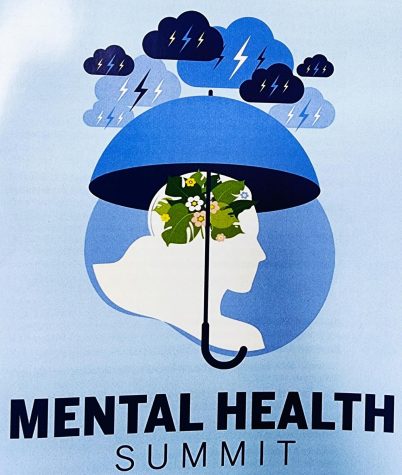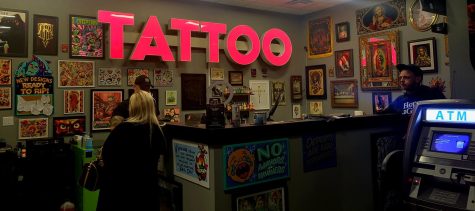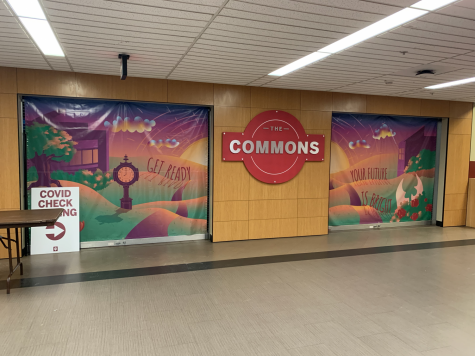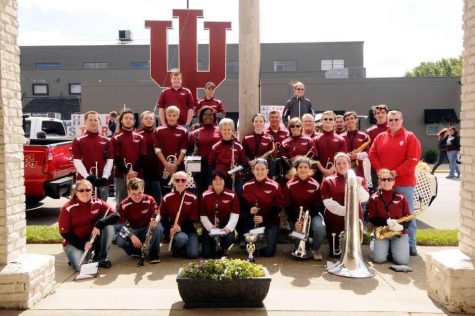LIVING ON $4.15 A DAY: SNAP CHALLANGE
I spent one week eating only what I could buy with $29.05. For the 46.5 million Americans who depend on food stamps, living on less than $5 a day isn’t just an experiment, but a reality.
November 17, 2014
I wasn’t sure that I could live off $4.15 a day, and after doing it for one week, I’m still not.
Four dollars and fifteen cents. It’s the price of three songs on iTunes. It’s a little more than a gallon of gas. It’s enough for a medium-sized salad in the cafeteria, if you leave off the cottage cheese.
Realistically, it’s less than I spend on coffee on an average day before noon.
But for some Americans, it’s their reality. The average person using the Supplemental Nutrition Assistance Program (SNAP), commonly known as food stamps, receives $4.15 a day, or $1.38 per meal.
For me, $29.05 was able to purchase: a dozen eggs, one loaf of bread, one bag of lentils, a bag of black beans, a jar of peanut butter, seven apples, seven bananas, a bag of frozen veggies, some dry pasta, marinara sauce and a bag of baby carrots.
That is what I lived on for seven days. I’ll spare the riveting details of each day’s menu by summarizing what most of the week consisted of:
BREAKFAST: one egg (two if I was really hungry), one piece of fruit
LUNCH: one peanut butter sandwich, one piece of fruit
DINNER: some strange concoction of the other things I bought, sometimes with a fried egg on top
Gone were my morning smoothies and my late-night glass of dark chocolate almond milk. Gone were the days of ordering take-out when I’m running too late to pack a lunch. Gone was my daily triple shot of espresso, though I confess that I took full advantage of the bottomless drip coffee in my office break room.
I know that my experience does not replicate the unique challenges those living on an extremely tight budget experience every day.
For example, I had moments of weakness. Like the Tuesday I got my feelings hurt and couldn’t stop myself from buying a $3 carton of ice cream from the Walgreens by my bus stop. And the time I bought a pack of almonds out of a vending machine on my way to an interview for this piece.
These are luxuries that I realize not everyone depending on temporary government assistance has access to.
For these people, budgeting their SNAP benefits could mean the difference between being able to eat and being hungry.
— Cher Assad, economic success and housing counselor
Even though Kentucky and Indiana have both reported a decline in the number of people using SNAP, those people who do continue to need the assistance still receive less than $30 a week per person.
That’s the reality for 823,000 people in Kentucky and 882,000 in Indiana, according to the state agencies that administer the programs.
Cher Assad, economic success and housing counselor at The Center for Women and Families in Louisville, said many of their clients receive SNAP benefits.
“The amount of aid that most of my clients receive is not realistically enough to provide nutritious meals, and with recent cuts to SNAP benefits, it’s becoming even less of a reality,” said Assad.
At the end of the week, I didn’t feel particularly hungry, but I didn’t feel particularly healthy or energetic either. My body craved produce: fruits, vegetables, and leafy greens. I noticed a real difference, especially in my ability to concentrate and focus.
Assad said that this is a real struggle for those depending on government programs like SNAP.
“More often than not, they’re opting for frozen meals, dried goods and boxed items that have a longer shelf life, as opposed to produce or other perishable meal items that might go bad before the month is over,” she said.
The reason, however, boils down to simple economics. Assad said her clients aren’t able to purchase produce because whenever they shop, they have to consider “how to get as much food possible, food that will last the longest… on the small amount of benefits they are receiving.”
Approximately 20 percent of SNAP recipients have no form of income, according to the SNAP Challenge website. Assad said that some of her clients have absolutely no income, so SNAP benefits are the only source of income they have to spend on groceries.
“For these people, budgeting their SNAP benefits could mean the difference between being able to eat and being hungry,” she said.
Often, people using SNAP depend on community ministries, food pantries and donations to supplement for what they are unable to purchase with their allowance. Assad said that there are a number of community ministries in the Louisville metro, typically at least one in each zip code.
These ministries are able to provide dry goods on a monthly or quarterly basis. Some of them even provide short-term assistance with small utility bills as well. Assad said programs like these are important and that there is a real need for their services.
Some IU campuses, like IUPUI, have food pantry services available on campus. IU Southeast has formed a committee to investigate options for opening a similar food pantry for its students.
Resources like these are important, Assad said, as they play an important role in helping people achieve economic self-sufficiency.
“I think it’s important for people to know that not everyone is trying to manipulate the system,” she said. “I have worked with clients from many racial, socioeconomic, religious and educational backgrounds who have had their lives turned around by these temporary government assistance programs.”













